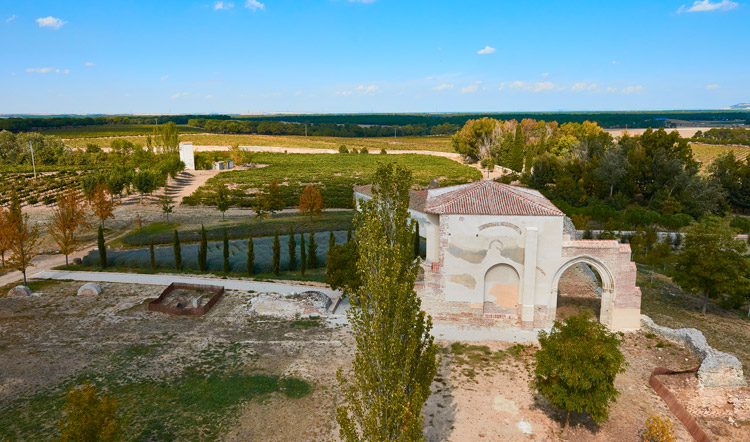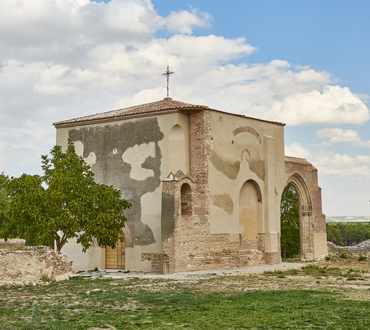
Origin
The Wineries and Vineyards of La Mejorada are situated 5 km from the town of Olmedo, in the province of Valladolid.
The name La Mejorada has its origin in the 14th century, when María Pérez, a neighbour in Olmedo, received an improvement (“mejora”) in the inheritance that her parents left her and that included the lands where the Wineries and Vineyards La Mejorada now sit. A devout to the Virgin Mary, María Pérez, “la mejorada” (the improved one), built a humble chapel, but it wasn’t until late in the 15th century that a small community of Jeronimo monks built their monastery there, always counting on the patronage of Prince Fernando de Antequera who would later become, after the Caspe Agreement, Fernando I of Aragón. It was the accountant to Fernando I, Velasco Hernández Becerra who built the Mudejar Chapel that would serve as the family mausoleum. The chapel is a characteristic example of the influence of the Islamic culture in the Castilian Court, and which is entirely conserved and considered national monument since 1931.
Crossroads
A crossroads in the Castilla of the 15th and 16th centuries, the Inn of La Mejorada Monastery soon became a mandatory meeting place, with important figures of the age of the Catholic Kings, such as Carlos V and Felipe II visiting it often. Proof of the importance La Mejorada had in those years is the fact that Christopher Columbus wrote up the Memorial of 1497 here; or that one of our most important sculptors, Alonso Berruguete, designed the altarpiece of his chapel here in 1525, a piece that is still conserved today in the National Sculpture Museum.

During the 17th and 18th centuries, it continued to be a prosperous monastery, where the Jeronimo monks maintained an active community, interested both in culture and agrarian labours. The existing wineries are testimony to the importance of the viticulture and the production of wine in the life of the monastery. The fences and waterwheels — which gave names to two of the wines — the entrance doors, the fishery that provided fish for the entire community during Lent, the dovecot, the House of the Pilgrim, the mills and the dams of the Adaja, the granaries… They are all constructions of this period. Between 1744 and 1774, Fray Antonio de Pontones; an architect, lived in La Mejorada and most likely intervened in some of the constructions mentioned.
From Expropriation to Present
The life of the monastery was interrupted with the War for Independence, during which it was completely dismantled. Only the Mudejar chapel remained standing. With the Expropriation of Mendizábal, the Jeronimo monks disappeared, and the monastery went to private hands. In 1892, Filipino Dominico monks acquired it, carrying out important refurbishment to build a school. In 1984 they got rid of the property, which went on to become designated for agricultural use. In 1999 the society of Wineries and Vineyards La Mejorada bought the remains of the monastery and, with them, the 140 hectares that belonged to it, beginning again the plantation of vines and the tasks of restoration. In 2004, the winery was built into the remains of the monastery around the cloisters. Towards the end of 2007, La Mejorada went on to become property of the family society of Rafael Moneo.


